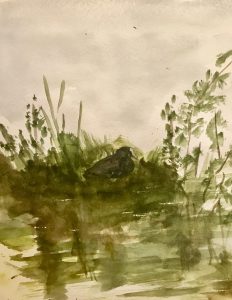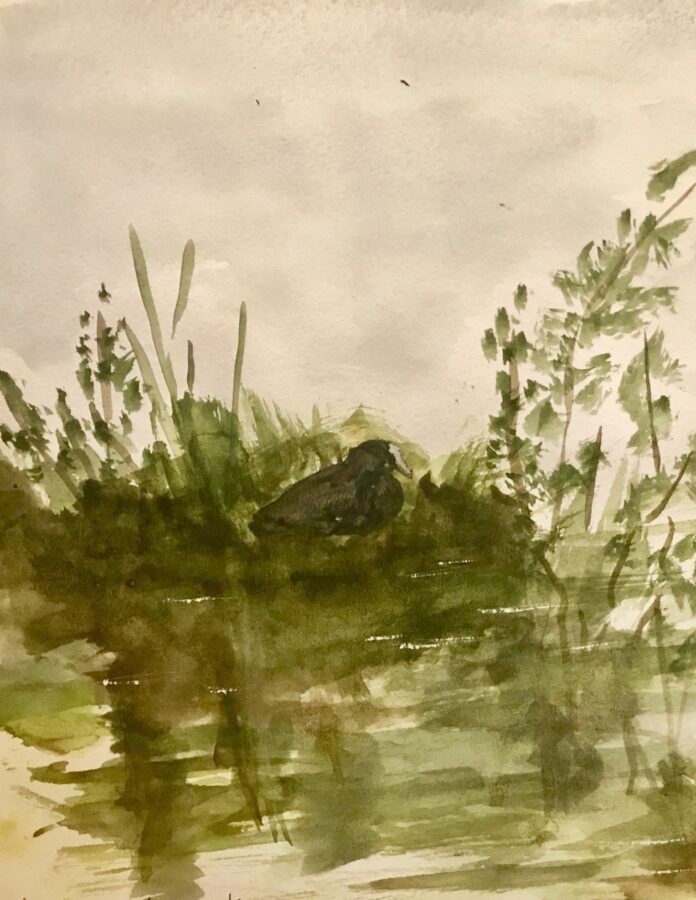BY LESLIE REGO

Around this time last year I saw American coots at the Camas Prairie Centennial Marsh. This year I am observing Eurasian coots along the Silea River in the Veneto region of Italy. The two birds closely resemble one another. They are similar in size, habitat and breeding characteristics.
Coots are often mistaken for ducks, but there are distinct differences. Coots have feet like chickens. Running along the sides of each toe are scalloped, web-like lobes. To facilitate movement on dry land, the toes fold back, but as I watched the coots walk, I noticed that often one toe got caught underneath another, which caused the bird to stumble in an ungainly fashion. The birds are reluctant to fly. Most of the time I would see the coots “run” across the water surface when they wanted to cover some distance.
The American coot is commonly called a mud hen. The Eurasian coot is referred to as the common coot. Both species are black, except for a white tear-shaped section that runs from the forehead to the beak. This white area is the origin of the expression “bald as a coot,” which was used as early as the 1400s!
During my daily walks along the Silea River I discovered several coot nests, each one about a foot in diameter. The construction is messy and the birds were constantly rearranging and renovating the structure. The bird sitting on the nest would shift a few twigs. Often I saw the partner bring new reeds in its beak to add to the perimeter.
Each nest was built with easy access for a quick entrance and exit. Several times I saw the bird scuttle down these exit ramps, swim around a bit to wash and preen itself, then the coot would reenter the nest, turn around several times, preen a bit more, and eventually resettle on the eggs. I was astonished that the bird left the six cream-colored eggs unprotected for a long time, although I did see the partner rush at other birds when they got too close.
I walked along the river every day for 12 days. I would have liked to have seen the chicks hatch, but on my last day the coot was still patiently sitting on the nest.
Leslie Rego is an Idaho Press Club award-winning columnist, artist and Blaine County resident. To view more of Rego’s art, visit leslierego.com.



